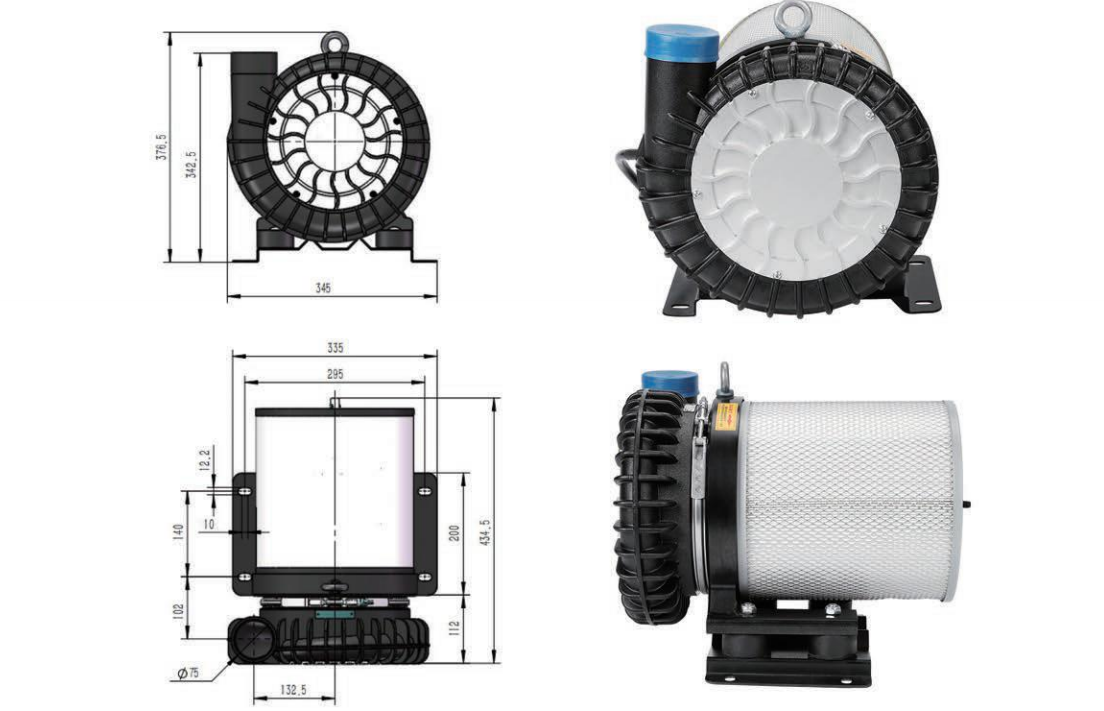& nbsp; The speed of a high-speed fan directly affects its air volume and pressure. Generally, the higher the speed, the greater the air volume and pressure. Especially for the Smart high-speed fan, advanced fluid dynamics design is adopted, combined with the aircraft turbine power system, to achieve ultra-low energy consumption while maintaining high air pressure and large flow rate. The following is a specific introduction to its impact:
& nbsp; The direct relationship between fan speed and air volume:
& nbsp; The speed of a fan refers to the number of times the impeller rotates per minute, usually measured in revolutions per minute (RPM). When the speed of the fan increases, the frequency of the impeller pushing the air also increases, thereby sucking in and expelling more air.
& nbsp; When the fan speed is low, the air volume shows a rapid upward trend with the increase of speed; In the high-speed region, the growth trend of air volume gradually slows down, and may even reach saturation. This is mainly because the marginal efficiency of converting kinetic energy into wind power decreases during high-speed operation.
& nbsp; The relationship between fan speed and wind pressure:
& nbsp; Wind pressure is the static pressure generated by a fan during operation, usually measured in pascals (Pa). The increase in speed not only increases the air volume, but also enhances the compression capacity of the fan for air, thereby increasing the air pressure.
& nbsp; Similar to air volume, air pressure increases with the increase of rotational speed, but after reaching a certain rotational speed, the growth rate slows down and eventually approaches a limit value. This is because at extremely high speeds, the efficiency of converting kinetic energy generated by the impeller decreases, making it impossible to continue effectively increasing wind pressure.

& nbsp; Other factors that affect the performance of the fan:
& nbsp; Different fan designs have different speed air volume/pressure characteristic curves. The shape of the impeller, the number and angle of the blades, etc. all affect the relationship between these parameters. For example, the speed of the Smart high-speed fan can reach 13000-28000 revolutions per minute, and the air volume can reach 1700 cubic meters per hour.
& nbsp; The performance of the fan will also vary under different load conditions. When the load is large, the speed is relatively low but the air volume and pressure are high; If the load is small, the opposite is true.
& nbsp; Factors such as ambient temperature and pressure can affect the density of air, which in turn affects the airflow and pressure performance of the fan.
& nbsp; Overall, the speed of a high-speed fan has a direct and significant impact on its air volume and pressure. By adjusting and controlling the speed of the fan reasonably, it is possible to effectively manage and optimize the ventilation and exhaust systems in industrial applications, ensuring the efficient operation of the system. Especially the Smed high-speed fan, with its unique design and excellent performance, has shown great potential and value in industrial applications. Whether it is to improve production efficiency, reduce operating costs, or meet specific industrial needs, Smed high-speed fans are a preferred solution worth considering.







